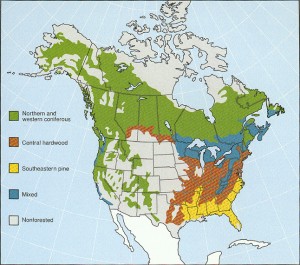
In 1978, the U.S. and Canadian lumber industry initiated a massive lumber testing program that would change the way strength values for lumber would be derived. Led by the U.S. Forest Products Laboratory (FPL), this 12-year study would become known as the “In-Grade” lumber testing project and involved all commercially-viable softwood species grown in both countries.
Strength values already existed for most species at that time, but had historically been developed using small, short clear samples for testing. This new “In-Grade” testing method would use actual full-length pieces of lumber that was expected to give a better indication of each species strength, according to FPL’s research. Over this 12 year period, more than 70,000 pieces of lumber was destructively tested in what is considered as one of the largest material testing projects ever completed.
Check out the video below on how lumber is tested to its breaking point! Be sure and turn up the volume!


